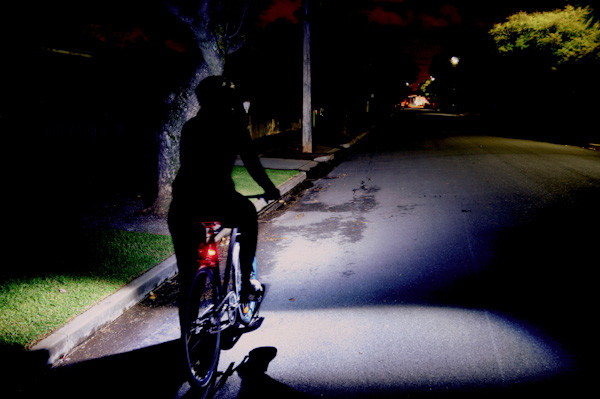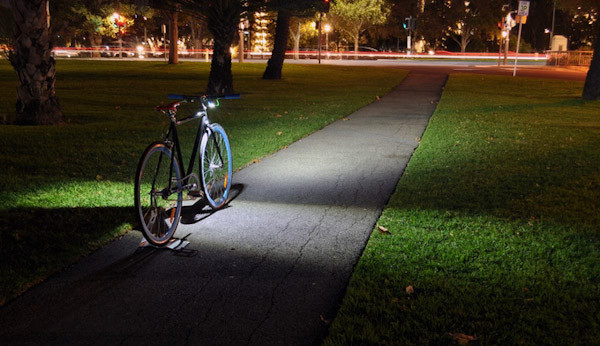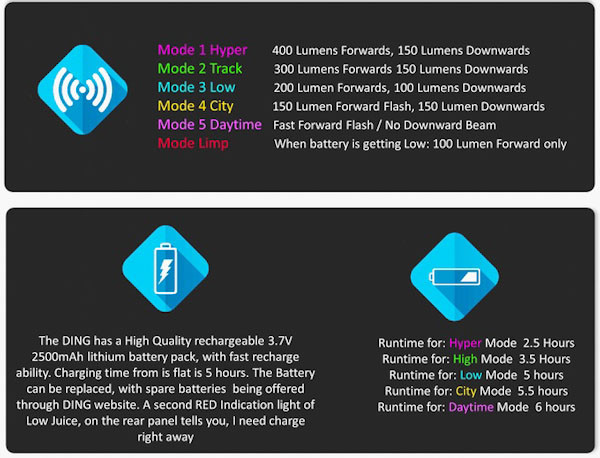
While cycling lights have become much brighter in the past few years, urban riders are looking in a whole different direction when it comes to light innovation- sideways. Recently Bikerumor previewed the Hueray light-up grips which follow this principle, but the Ding goes a step further and projects a large beam of light on the ground around you. The idea was hatched after the Ding’s creator Des Burns was almost hit by a motorist, who said they didn’t see him even though his front and rear lights were on.
The Ding light has typical forward lighting for the cyclists visibility, but a separate light also projects downwards in a rectangular shaped beam that covers both sides of the rider to make you much more visible to drivers. The Ding’s Kickstarter campaign is already in full swing, but still needs some funding to go into production. Check out the details of the Ding below the break…
The Ding is a fairly compact unit measuring 2″ wide, 3″ long and 1.6″ deep and weighing in at 110g. It uses a rotating clamp that hangs either under your handlebars or your stem to ensure the downward beam isn’t blocked. The strap connects to a light holster so you can quickly un-clip the light itself and leave the clamp behind. The universal strap mount adjusts between 20-40mm to fit on nearly any bar or stem and was designed to be easy to install, even in complete darkness. The Ding comes with a spare silicon strap so you’re not left in the dark if yours happens to break.
The Ding’s forward beam is projected by two LED’s, and maxes out at 400 lumens. The lenses are an angled cut-off type to reduce forward glare, and are designed to eliminate hot spots. The downward beam projects at up to 150 lumens, and illuminates an area 10′ wide and 5′ deep centered around the rider.
A single button controls the Ding by scrolling through the light’s five different modes. The largest battery possible was used to provide good burn times, and although it should run for several years the battery is actually replaceable. The Ding charges by USB in 5 hours, and the battery’s charge port is protected from the elements by a rubber insert on the light holster. See the graphic below for the various modes and run times.
The Ding has been tested for off-road trail riding, and can take the abuse of rough terrain. The company tested with a rider who used two Ding lights, which would output 800 lumens. There are far brighter lights available, so I’d suggest pairing a Ding with a stronger helmet light for full speed night riding. For commuters however, the Ding is a brilliant concept.
The Ding light comes in either all grey or with green, blue or orange colored front bezels. The retail price will eventually be $92 USD, but currently Kickstarter supporters can still buy in for $72. The Ding’s Kickstarter campaign is on until Sat. June 27th, and if successful the first shipments are expected to go out around October.



